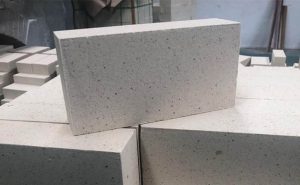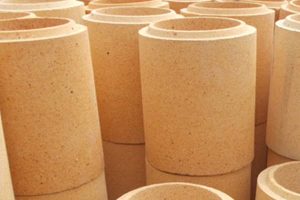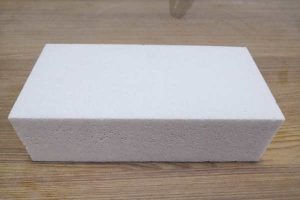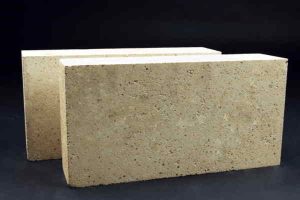Como todos sabemos, los ladrillos se han utilizado durante siglos como material de construcción debido a su durabilidad, fortaleza, y atractivo estético.
Sin embargo, no todos los ladrillos son iguales. Hay varios tipos de ladrillos disponibles en el mercado., y cada uno tiene sus propias propiedades y características únicas que lo hacen adecuado para aplicaciones específicas.
En este articulo, Por refractario discutirá la diferencia entre ladrillos de arcilla y ladrillos refractarios, Dos tipos de ladrillos comúnmente utilizados.
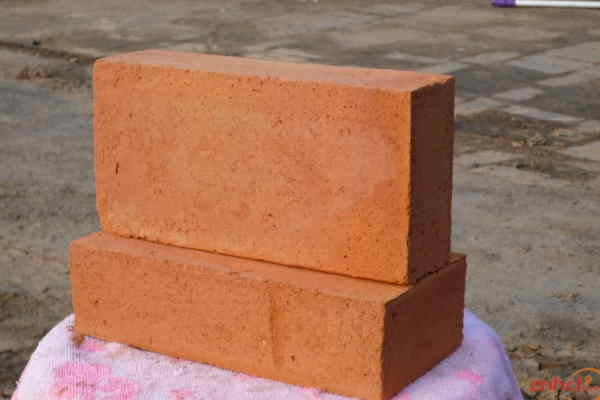
1. Introducción
Los ladrillos son un material de construcción esencial y se han utilizado para fines de construcción durante miles de años.
Se hacen moldeando arcilla u otros materiales en la forma deseada y luego disparándolos en un horno.
Los ladrillos de arcilla y los ladrillos refractarios son dos tipos de ladrillos que se usan comúnmente en la construcción y otras aplicaciones.
Mientras que pueden parecer similares, Tienen diferencias significativas en términos de su composición., proceso de fabricación, propiedades, y aplicaciones.
2. ¿Qué son los ladrillos de arcilla??
2.1 Composición
Los ladrillos de arcilla están hechos de arcilla y lutita naturales que se forman en forma rectangular y luego se disparan en un horno a altas temperaturas. La arcilla generalmente se mezcla con agua y otros aditivos como la arena, Lima, o ceniza para mejorar su fuerza y durabilidad.
2.2 Proceso de fabricación
El proceso de fabricación de los ladrillos de arcilla implica los siguientes pasos:
2.2.1. Preparación de materias primas – La arcilla y el esquisto son triturados y mezclados con agua y otros aditivos.
2.2.2. Moldura – La mezcla se moldea en la forma deseada con una máquina de moldeo o a mano.
2.2.3. El secado – Los ladrillos se secan al sol o en un horno durante varios días.
2.2.4. Disparo – Los ladrillos se disparan en un horno a altas temperaturas que van desde 800 ° C a 1200 ° C.
2.3 Propiedades
Los ladrillos de arcilla tienen las siguientes propiedades:
2.3.1. Alta resistencia a la compresión
2.3.2. Buenas propiedades de aislamiento
2.3.3. Baja conductividad térmica
2.3.4. Buenas propiedades de absorción de sonido
2.3.5. Baja absorción de agua
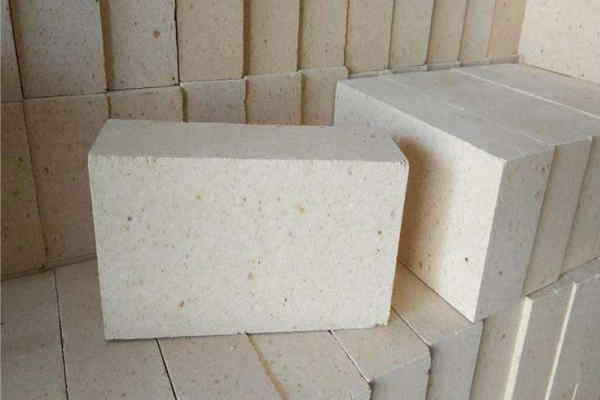
3. ¿Qué son los ladrillos refractarios??
3.1 Composición
Los ladrillos refractarios están hechos de materiales refractarios de alta calidad como la alúmina, sílice, magnesia, y circonita. Estos materiales tienen altos puntos de fusión y pueden soportar altas temperaturas sin descomponer ni deformarse.
3.2 Proceso de fabricación
El proceso de fabricación de ladrillos refractarios implica los siguientes pasos:
3.2.1. Preparación de materias primas – Los materiales refractarios se trituran y se mezclan con agua y otros aditivos..
3.2.2. Moldura – La mezcla se moldea en la forma deseada con una máquina de moldeo o a mano.
3.2.3. El secado – Los ladrillos se secan al sol o en un horno durante varios días.
3.2.4. Disparo – Los Firebricks se disparan en un horno a altas temperaturas que van desde 1400 ° C hasta 1800 ° C.
3.3 Propiedades
Los ladrillos refractarios tienen las siguientes propiedades:
3.3.1. Altos refractarios
3.3.2. Alta resistencia al calor y al choque térmico
3.3.3. Alta resistencia mecánica
3.3.4. Alta resistencia química
3.3.5. Baja porosidad
4. Diferencias entre ladrillos de arcilla y ladrillos refractarios
4.1 Composición
La principal diferencia entre ladrillos de arcilla y ladrillos refractarios reside en su composición.
Los ladrillos de arcilla están hechos de arcilla y lutita naturales, Mientras que los ladrillos refractarios están hechos de materiales refractarios de alta calidad, como la alúmina, sílice, magnesia, y circonita.
Esto hace que los ladrillos refractarios sean mucho más resistentes a las altas temperaturas y el choque térmico que los ladrillos de arcilla.
4.2 Aplicaciones
Arcilla de arcilla se usan comúnmente en la construcción para las paredes del edificio, pisos, y otras estructuras.
También se utilizan en la fabricación de chimeneas., chimeneas, y otras estructuras resistentes al calor.
Ladrillos refractarios, por otro lado, se utilizan en aplicaciones de alta temperatura, como hornos, hornos, e incineradores.
También se usan en la fabricación de vidrio, acero, y otros materiales que requieren altas temperaturas.
4.3 Fuerza y durabilidad
Los ladrillos refractarios son mucho más fuertes y duraderos que los ladrillos de arcilla.
Pueden soportar temperaturas mucho más altas sin descomponer o deformarse, haciéndolos ideales para aplicaciones de alta temperatura.
Ladrillos de arcilla, por otro lado, no son tan fuertes o duraderos y son más propensos a agrietarse y desmoronarse a altas temperaturas.
4.4 Resistencia al calor y a los productos químicos
Los ladrillos refractarios tienen una alta resistencia al calor y a los productos químicos, haciéndolos ideales para usar en entornos hostiles.
Son capaces de soportar altas temperaturas sin deformarse o descomponerse, y también son resistentes a los efectos corrosivos de los productos químicos.
Ladrillos de arcilla, por otro lado, no son tan resistentes al calor y los productos químicos y pueden descomponerse o desmoronarse con el tiempo.
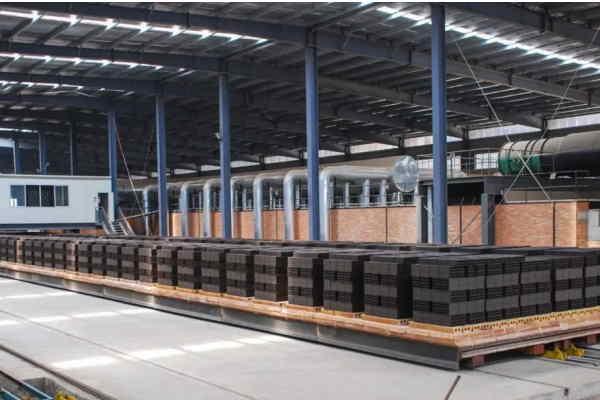
5. Cómo elegir entre ladrillos de arcilla y ladrillos refractarios
La elección entre ladrillos de arcilla y ladrillos refractarios depende de la aplicación.
Si está construyendo una chimenea o chimenea, Los ladrillos de arcilla pueden ser una opción adecuada.
Si está construyendo un horno o horno, Los ladrillos refractarios serían una mejor opción debido a su resistencia a alta temperatura.
6. Ventajas y desventajas de los ladrillos de arcilla
6.1 Ventajas
6.1.1. Ampliamente disponible y asequible
6.1.2. Fácil de fabricar
6.1.3. Buenas propiedades de aislamiento
6.2 Desventajas
6.2.1. No es adecuado para aplicaciones de alta temperatura
6.2.2. Puede romper o desmoronarse con el tiempo
6.2.3. No resistente a los productos químicos
7. Ventajas y desventajas de los ladrillos refractarios
7.1 Ventajas
7.1.1. Resistencia a altas temperaturas
7.1.2. Alta resistencia mecánica
7.1.3. Alta resistencia química
7.2 Desventajas
7.2.1. Más caro que los ladrillos de arcilla
7.2.2. Difícil de fabricar
7.2.3. No es adecuado para aplicaciones de baja temperatura
8. Conclusión
En conclusión, Los ladrillos de arcilla y los ladrillos refractarios son dos tipos de ladrillos que tienen diferentes propiedades y aplicaciones.
Mientras que los ladrillos de arcilla son adecuados para aplicaciones de baja temperatura, como paredes y pisos de construcción, Los ladrillos refractarios son ideales para aplicaciones de alta temperatura, como hornos y hornos.
La elección entre ladrillos de arcilla y ladrillos refractarios depende de la aplicación específica y el nivel de resistencia a la temperatura requerido.
9. Preguntas frecuentes
1. Se pueden usar ladrillos de arcilla en aplicaciones de alta temperatura?
No, Los ladrillos de arcilla no son adecuados para aplicaciones de alta temperatura, ya que pueden descomponerse o deformarse bajo altas temperaturas.
2. Son los ladrillos refractarios más caros que los ladrillos de arcilla?
Sí, Los ladrillos refractarios son generalmente más caros que los ladrillos de arcilla debido a los materiales refractarios de alta calidad utilizados en su composición.
3. Se pueden usar ladrillos refractarios en aplicaciones de baja temperatura?
Los ladrillos refractarios no se recomiendan para su uso en aplicaciones de baja temperatura, ya que pueden no proporcionar un aislamiento adecuado.
4. ¿Cuáles son las ventajas de usar ladrillos de arcilla??
Las ventajas de usar ladrillos de arcilla incluyen su amplia disponibilidad y asequibilidad, así como sus buenas propiedades de aislamiento.
5. ¿Cuáles son las ventajas de usar ladrillos refractarios??
Las ventajas de usar ladrillos refractarios incluyen su resistencia a alta temperatura, alta resistencia mecánica, y alta resistencia química.
En general, La elección entre ladrillos de arcilla y ladrillos refractarios depende de la aplicación específica y el nivel de resistencia a la temperatura requerido.
Mientras que los ladrillos de arcilla pueden ser adecuados para aplicaciones de baja temperatura, como paredes y pisos de construcción, Los ladrillos refractarios son esenciales para aplicaciones de alta temperatura, como hornos y hornos.
Al comprender las diferencias entre estos dos tipos de ladrillos, Puede tomar una decisión informada al elegir el material adecuado para su proyecto..

